The Simplest Guide To Use Backpack Loops

Backpack loops are part of a lock's mechanism, and they're important to keep you safe and secure when using one. In this article, we will cover what backpack loops do, how they work, as well as how to use them properly for maximum security and protection. So, if you want more knowledge about how to use backpack loops, then continue reading this article.
What are Backpack Loops?
Backpack loops are the straps that form a loop on the backpack. These loops allow you to carry other items, such as sleeping bags, tents, or even water bottles. There are several types of loops you may find on a backpack. The most common ones include: compression straps, daisy chains, D-rings, MOLLE webbing, and bungee cord.
How to Make the Most of Backpack Loops?
Side Compression Straps
Secure Items & Carry Heavy Loads
You've probably noticed a pair of little loops on the side of your backpack and wondered what they're for. Side compression straps, as you might have guessed, are used to compress the contents of the side mesh pocket. Looping each end through its respective loop makes it easier to keep the items you put there in place and prevents them from falling out when you open it up or push against them in transit.

To make the most use of this feature, keep heavier objects like sleeping bags and tent poles on that side so that when you take your pack off, they'll be right there without having to dig around inside to find them. When carrying a heavy load, make sure that each loop is equally exposed to allow for even loading.
Stabilizer Straps
A side compression strap is also used to help stabilize your bag from swaying or twisting, providing you with a more comfortable carry. Using the side compression strap to compress the pack against your back by pulling down on the strap will help make your load feel lighter than it really is and makes your backpack more comfortable to carry.
If you want to reduce your pack's weight, make it more comfortable, or improve your posture when carrying it, you should use both side compression straps when wearing a backpack.
Shoulder Strap Loops
LANTC20
Backpack shoulder straps often have loops or rings where you can attach gear. They are meant to hold small items such as sunglasses or flashlight. These are not designed to carry heavy gear and heavy objects, though.
You can also attach additional pouches to hold small items such as a camera or phone.
D-Rings
iShell35
The D-rings are found on the shoulder strap of a backpack, or sometimes in the center of the back. D-rings can be used for keeping light weight items like flashlights and headlamps from dangling by attaching them to the rings. If you have a flashlight that has an elastic band, you can use a carabiner to clip it to the ring
Hip Belt Loops
BOGDA35
Hip belts often have zip-up pockets, but they are also common with webbing loops that you can use as attachment points. Hip belt loops allow you to easily attach items that you want quick access to, like your water bottle, or a camera. If you find yourself always needing something, then using a hip belt loop may help keep it easily accessible.
Bungee Cord
BOGDA35
If you're a dedicated hiker, you probably already have a few bungee cords in your pack. These handy straps can be used for everything from keeping your gear organized to anchoring a small tarp between trees for shelter. In addition to that, you can also use bungees to carry light items like jackets or blankets without adding extra weight to your pack.
Here are some guidelines for getting the most out of your loops:
-Attach one end of the cord to a loop and wrap the cord around itself several times before tying it off with an overhand knot.
-Avoid securing anything heavy directly to the loop. Instead, use a carabineer or other quick-release fastener (like this one) so you can easily release whatever is being carried by the cord.
-If there's nothing else in your pack, roll up your puffy jacket and tie it around its middle.
MOLLE Webbing
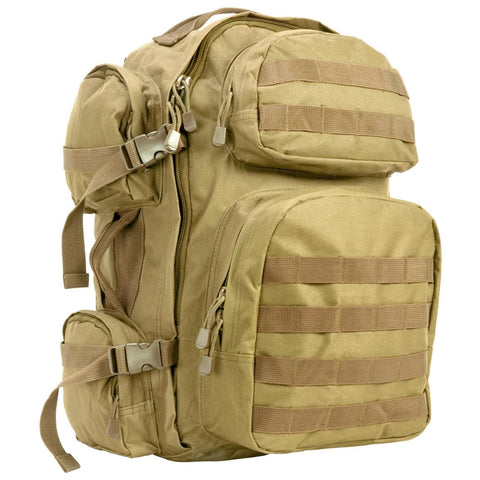
MOLLE (MOdular Lightweight Load-carrying Equipment) is a system of webbing straps and buckles used by military personnel to attach pouches to tactical backpacks. It allows you to customize your backpack, making it easy to carry heavy objects without making the bag itself too heavy.
Bottom Loops
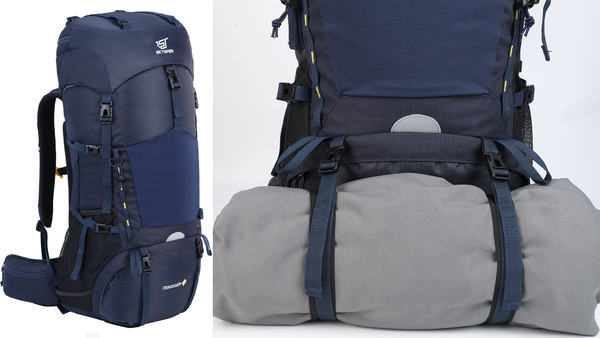
TENGGER50
Many backpacks have loops on the bottom which are adjustable to allow you to attach heavy items such as sleeping pads, sleeping bags or a tent.
Overnight backpacks and large backpacks typically have bottom straps.
Trekking Poles / Ice Axe Loop
Most climbing backpacks have loops on the bottom front or back of the backpack to attach ice axes or other equipment with sharp edges.
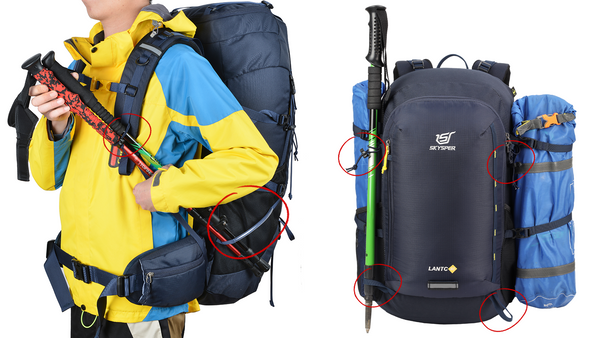
TENGGER50 & LANTC40
You might want to attach your ice axe so that it's secure and doesn't interfere with other gear in your pack. The top usually has a bungee cord to hold the upper part of your ice axe in place. You'll be best off using both these methods.
Top Lip Loop
Top lid loops are a fairly common feature on backpacking backpacks, which are another type of compression straps on the top of your pack's lid.
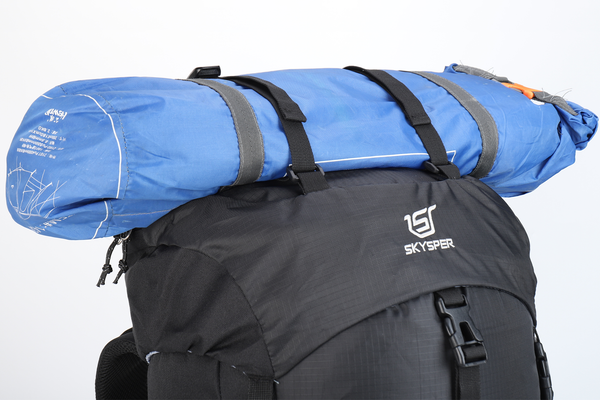
TENGGER50
These loops are much better suited for oversized but lightweight items like sleeping mats that don't weigh you down too much but still need a little extra space for organization.
When using these loops, it's important to keep in mind that they are not designed to hold a lot of weight or it can become uncomfortable when hiking for long periods of time.
Daisy Chains
iShell30II
Daisy chains (also known as strap loops) are a series of loops that are connected and secured to each other. Daisy chains give you the option of different lash points or to run multiple straps to hold an item more securely. To make the best of it, you can weave shock cord between daisy chains, creating a web of shock cord that you can stuff gear inside, while you can still attach light items on each loop.
Disadvantages Of Using Backpack Loops
All that glitters isn't gold. So goes the adage about things that look too good to be true. There are definitely some cons to using backpack loops.
The main pro is that you have a place to hang the extra stuff from your backpack so it doesn't get lost inside and so it's easier to find when you need it.
The main con is that it can throw off the weight balance of your pack, and if you're hiking, this could make things feel awkward, or even unsafe.
If you're walking around town, you don't want to worry about side-stepping every lamppost and signpost along the way.
Another con is that items on the outside of your pack are more susceptible to damage because they're not under the protection of your pack's shell.
Plus, they can knock into things along the way, damaging whatever they strike and potentially damaging the item attached to your bag at the same time.
Also, it can be noisy when shuffling through a long rope of items if you have a lot of stuff hanging off your bag.
The final con is that all those dangling things can make it harder for you to find what you need when you need it, because there will be a lot of extra junk
Conclusion
Now that you are equipped with some knowledge about the best way to use backpack loops, there shouldn't be anything standing in the way of your next outdoor adventure.
Enjoy your next trip out of town, whether it's a weekend hike or an extended vacation. Don't let the elements take you by surprise and be prepared for any situation with these helpful tips.
Introducing SKYSPER: Your Ultimate Companion for Hiking Daypacks
Introducing SKYSPER, a renowned brand specializing in professional hiking daypacks. SKYSPER offers a wide range of hiking daypacks designed to meet the needs of outdoor enthusiasts of all levels. From durable and spacious hiking daypacks for extended treks to lightweight and compact foldable backpacks for shorter excursions, SKYSPER has you covered for all your adventures. Whether you're embarking on a day hike, weekend getaway, or multi-day expedition, SKYSPER's backpacks are engineered for comfort, functionality, and durability, ensuring that you can explore with confidence and convenience. With innovative features, ergonomic designs, and high-quality materials, SKYSPER hiking daypacks are the perfect companion for your next outdoor adventure.
FAQs
-
What are the different types of loops found on backpacks?
- Backpacks may feature various types of loops, including compression straps, daisy chains, D-rings, MOLLE webbing, and bungee cords. Each type serves a specific purpose, such as securing items, attaching accessories, or enhancing stability.
-
How can I make the most of backpack loops?
- To maximize the utility of backpack loops, consider using them to secure items like sleeping bags, tents, or water bottles. Additionally, you can utilize loops for stabilization, organization, and customization of your backpack according to your needs and preferences.
-
Are there any safety considerations when using backpack loops?
- While backpack loops offer convenience, it's essential to maintain balance and weight distribution to prevent discomfort or instability while hiking. Avoid attaching heavy items directly to loops and ensure that your backpack remains balanced and comfortable to carry.
-
What are the disadvantages of using backpack loops?
- Although backpack loops provide additional storage and organization options, they can also have drawbacks. These include potential imbalance, susceptibility to damage, noise from dangling items, and difficulty in accessing items buried within a looped arrangement.
-
How can I mitigate the risks associated with using backpack loops?
- To minimize risks associated with backpack loops, prioritize lightweight and non-bulky items for attachment. Additionally, regularly check the stability and balance of your backpack, and avoid overloading loops with excessive weight or volume. Stay mindful of your surroundings to prevent items from snagging or causing inconvenience during outdoor activities.




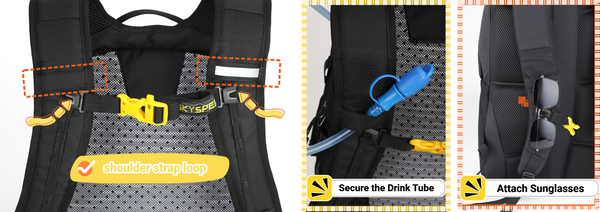

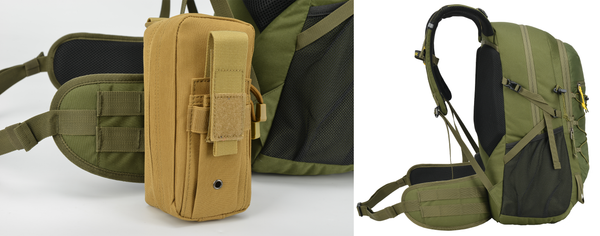





Leave a comment